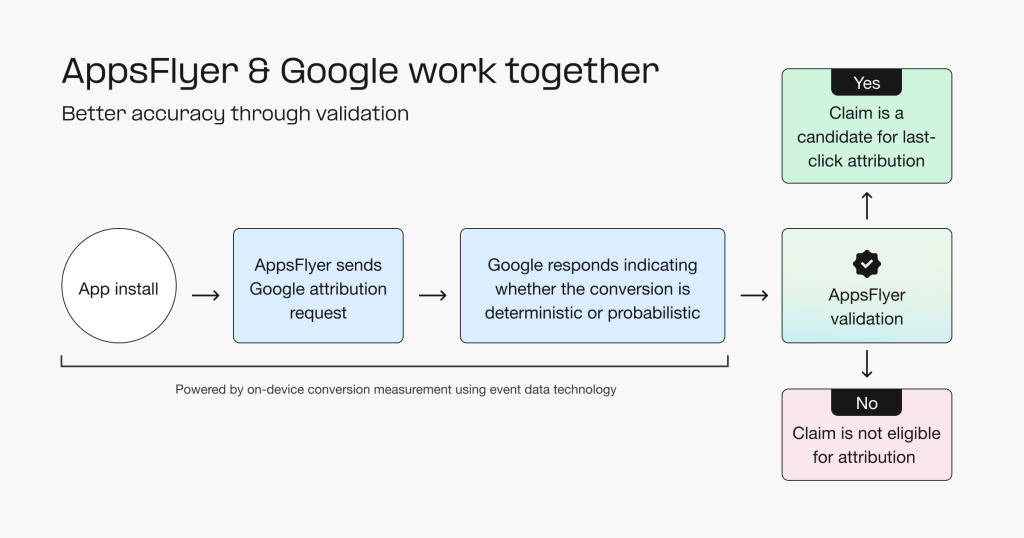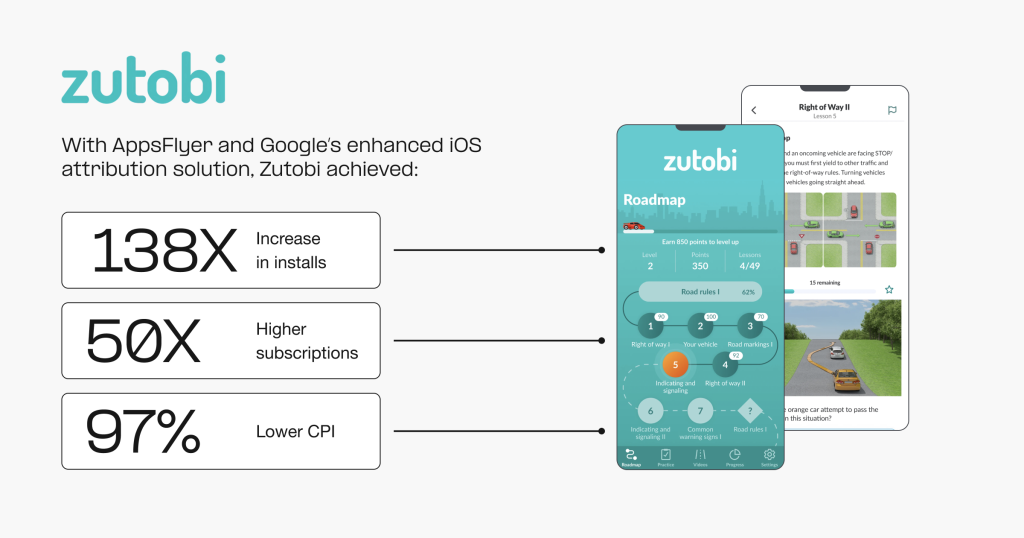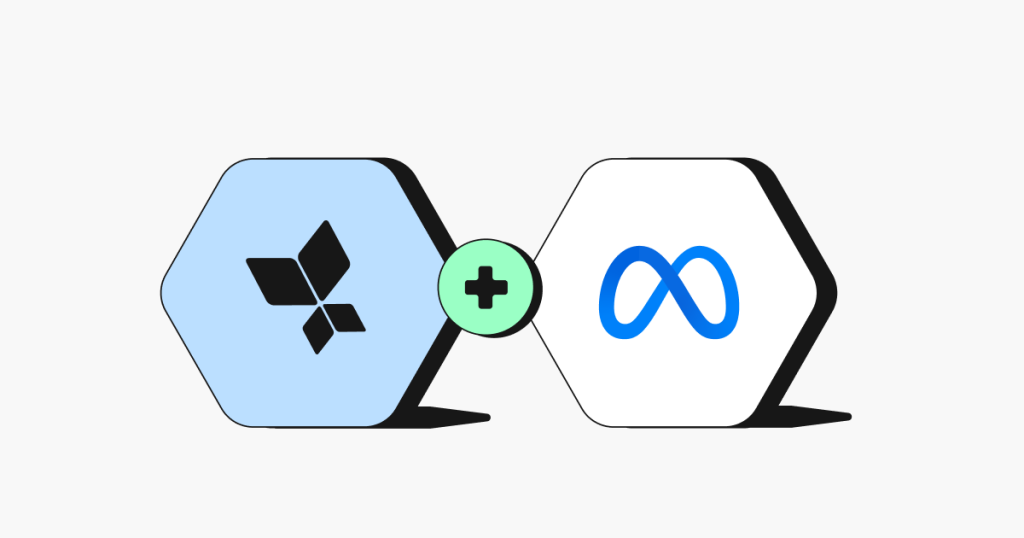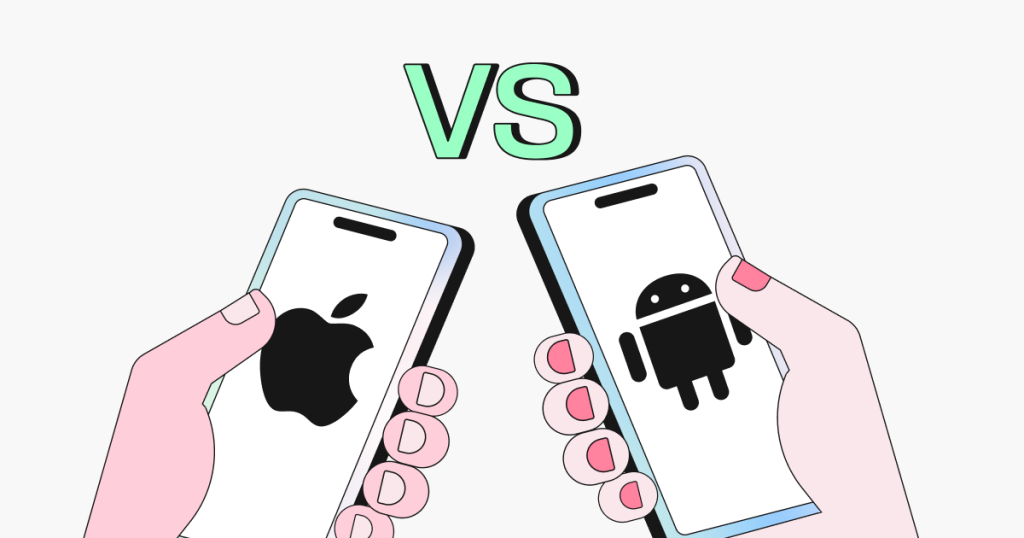Growth unlocked: AppsFlyer and Google uncover the true impact of Google Ads


Great marketing starts with great measurement, but on iOS, accurate attribution is easier said than done.
As the gap between user actions and what can actually be measured continues to widen, marketers face a growing challenge: how to make informed, data-driven decisions in a privacy-centric world.
To address this, AppsFlyer and Google have joined forces to enhance the iOS measurement framework by introducing a joint attribution solution that enables advertisers to fully capitalize on iOS.
AppsFlyer now supports richer iOS attribution with Google
AppsFlyer now leverages Google’s Integrated Conversion Measurement (ICM), bringing meaningful innovation to iOS measurement.
This solution is now available to all advertisers in beta. Any advertiser is able to implement it and those who do can expect an increase in iOS conversions attributed to Google Ads — particularly from users who were previously unattributable
This means greater visibility, more accurate attribution, and smarter optimization decisions backed by more complete data.
And it’s not just iOS. Even on Android, privacy shifts and regulatory changes are starting to impact app measurement, especially when it relies on user-specific identifiers. This is paving the way for privacy-preserving solutions like aggregated or modeled attribution, which are becoming increasingly important across the ecosystem to streamline compliance and maintain measurement accuracy.
“The real-world impact advertisers are seeing after adopting our Integrated Conversion Measurement solution is remarkable. By delivering more complete and accurate attribution, we’re empowering businesses with the insights needed for smarter decisions and meaningful growth. We’re truly excited to see more examples of how Google and AppsFlyer’s measurement innovations will help even more advertisers thrive.”
Lee Jones, Managing Director, Global App Ads, Google
This is where the collaboration truly shines: By combining AppsFlyer’s attribution solution together with validation, you gain signal enrichment and a robust reporting infrastructure — together transforming the integration into a fully actionable, privacy-compliant measurement solution.
Key pillars of the joint solution
- Coverage: Recover critical signals to ensure all user actions across the funnel are measured and accounted for.
- Privacy-centric: Deliver insights through privacy-preserving measurement that maintains trust.
- Validation: Use AppsFlyer’s visibility into the mobile ecosystem to verify and continuously improve modeling accuracy.
- Signals: Capture conversions and deliver optimization signals, even on devices without user identifiers, so your campaigns perform seamlessly. That way, your brand doesn’t miss out on valuable iOS users.
With Google joining AppsFlyer’s Single Source of Truth (SSOT) solution — established as the industry standard — advertisers gain access to deduplicated, real-time, and granular attribution. This powerful integration unifies SKAN and AppsFlyer attribution into a cohesive measurement framework, unlocking deeper, richer insights that empower smarter, faster decision-making.
Better accuracy through validation
Validation is a cornerstone of our unbiased approach — and a unique added value of how AppsFlyer customers can leverage Google’s ICM, ensuring data integrity and trust at every step.
Together with Google, we’ve developed a dedicated mechanism to measure and attribute Google Ads using the same industry standards applied to all networks. This process verifies attribution claims before they’re included in your reports — filtering out noise, enhancing accuracy, and boosting confidence in campaign performance.
AppsFlyer applies proprietary algorithms to assess every signal and attribute only trustworthy conversions. This added layer of scrutiny not only improves reporting precision but also ensures marketers can make better decisions, all while respecting user privacy.

Google’s data now appears in your AppsFlyer reporting dashboard under Google Ads. These conversions are measured using AppsFlyer’s probabilistic attribution mechanism, enabling cross-network measurement and a more complete view of performance that helps you make faster decisions and maximize return on ad spend (ROAS).
Making an impact with probabilistic modeling
Brands that have traditionally relied solely on deterministic attribution are missing out. In today’s privacy-centric world, that approach alone no longer delivers the full picture.
Our data clearly shows that probabilistic modeling is effectively bridging attribution gaps, enabling advertisers to unlock significant value and measurable outcomes from day one, with some iOS apps seeing a 100–150% increase in installs attributed to Google. With the support of additional data signals, marketers across industries and markets are regaining unprecedented visibility into their full-funnel performance — insights that directly impact the bottom line, including a significant increase in iOS installs and drops in CPI.
This renewed visibility empowers brands to create personalized experiences, reach the most relevant audiences, and optimize campaign performance with precision and confidence. To give you a glimpse of what’s possible, here’s how Zutobi, a driver’s education app, successfully leveraged AppsFlyer and Google’s joint measurement solution.
iOS users are a critical growth channel for Zutobi, however, challenges with accurate campaign measurement limited their ability to scale iOS user acquisition. To address this challenge, Zutobi prioritized the steps to implement ICM including activating Google’s on-device conversion measurement using event data solution and integrating their app with the latest version of the AppsFlyer and Google Analytics for Firebase SDK. After implementing ICM, Zutobi saw transformative results in its AppsFlyer reporting, including a 138X increase in install volume, 50X increase in subscriptions, and a 97% reduction in cost per install. This enhanced measurement accuracy gave them the confidence they needed to effectively scale their iOS strategy.
“Integrated Conversion Measurement led to major improvements because it enabled us to more accurately understand how Google iOS campaigns perform in our AppsFlyer reporting compared to other channels. It also allowed us to scale this channel with greater confidence.”
Dmytro Grebennikov, Chief Marketing Officer, Zutobi

Don’t miss out on attribution
If you’re looking to regain the clarity of the pre-ATT era and harness every available signal to rebuild a comprehensive data picture for your brand, the AppsFlyer and Google integration makes it possible.
Implementing the integration does require development resources — updating both the AppsFlyer and Google Analytics for Firebase SDKs — but the payoff is immediate: a unified, privacy-centric iOS attribution solution for your Google App campaigns, delivering clarity and impact from day one.
- To get started, follow the steps in this Help Center article, which includes a detailed walkthrough video and a complete step-by-step implementation guide.
- Bonus: Catch up on our most recent webinar recording, where we’ll walk you through the key components and best practices to help you successfully set up the integration.
Final words
iOS marketing is entering a new era, one where privacy and performance no longer have to be at odds. With innovative measurement solutions from AppsFlyer and Google, you can reclaim lost signals, make smarter decisions, and confidently invest in iOS.
The tools are here. The signals are back. It’s time to close the gap for good and benefit from one actionable data reality.










